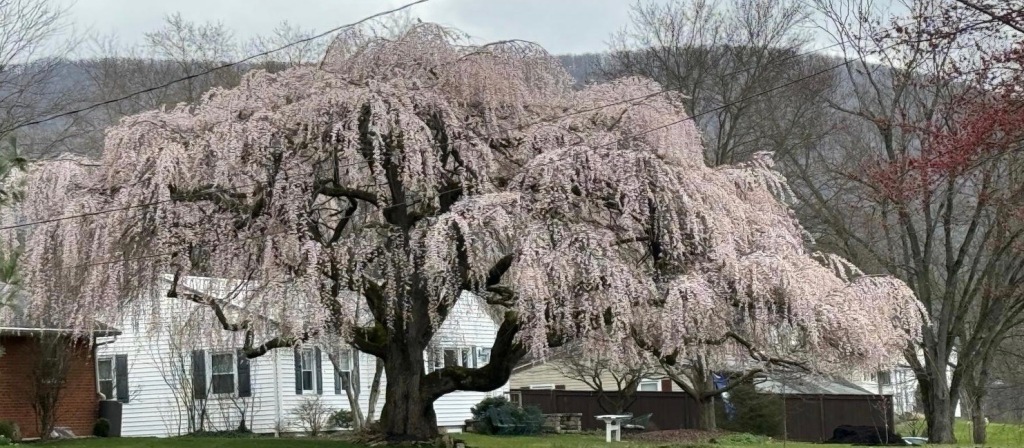Chris and I were youngsters in Happy Valley when The Twist was all the rage on dance floors. We didn’t meet until much, much later.
During the last dozen years since my return to Centre County, our twisted paths keep crossing—in gardens, through books, various community projects. We remember State College and Boalsburg in “the old days” and compare the antics of our knuckle-headed dogs. In the last few months, she earned a secret nickname: The Twister.
It started with two books Marina gave me written by British author Alice Vincent: Rootbound, Rewilding a Life, and Why Women Grow. I could go on and on about those books but I’ll be brief: Why have I never grown sweet pea flowers?
All local roads in horticulture lead to Chris, so at the beginning of the year I asked where I could find sweet pea seeds in Centre County. One Sunday in February she brought them to my door: April in Paris, High Scent, Old Spice, Summer Love, Mermaid’s Dream—all known botanically as Lathyrus odoratus.
Then the twisting whirlwind began.
I had been collecting plastic jugs (cider and distilled water from my hairstylist Rhonda) to do winter sowing … but Chris just kept pulling things out of her bags as she covered our workspace on my front deck. Dollar Store plastic boxes. More seeds—lupine, dahlia, chamomile, mâche. Sacks of potting mix. Blank labels made of old venetian blinds with a special marker that won’t wash off. Then, out came her drill.
The drill twisted and poked drainage holes in the bases of the jugs and on the tops for air and water flow. She did the same for her plastic boxes—30+ holes in each lid and another couple dozen in each bottom. I could barely keep up as I handed each container to her. In went moist potting soil, seeds, labels.
As I continued, Chris pulled out a bulb drill and began scurrying across my yard from one planting bed to the next, boring holes in the soil and plopping in her cache of bulbs—Narcissus ‘Littlefield’ and ‘Canaliculatus’, Iris reticulata ‘Clairette’, Crocus tommasinianus ‘Barrs Purple’, and Camassia quamash ‘Orion’. Chris was a twisting, spinning garden gnome filling deep holes in the soil with spring blooming treasures. I was overwhelmed.
Days later, with a seasonal flourish, my winter sowing area became a snow sculpture.

At the end of February, I moved my winter sowing containers so contractor Dave could replace the original wooden deck on the front of my house with composite decking. Then I added a new storage/garden seat (the earlier one had seen better days). My winter sowing space returned to the new deck and by late March, sweet pea seeds sprouted to seedling stage. I texted Chris.
Then, a twister of another kind.
The winds of April roared down from the mountain and I woke to the sound of a “BOOM!” The wind caught the new bench, it skidded across the new deck as if skating on ice, and crashed into my winter sowing community. Boxes and jugs, seeds, seedlings, and soil toppled onto the lawn. The plastic jugs weren’t the only things crushed. I texted Chris.
But resilience is at the heart of gardening. Some seedlings survived, some did not. Labels were misplaced in my hurry to save what I could. The plastic jugs were twisted and torn and eventually pitched.
And now, in these last days of April, I’m planning to build a sweet pea teepee out of pruned branches from my exuberant elderberry bush. That way, my surviving sweet peas can twist and climb and blossom and share their fragrance with our Milmar Circle neighborhood. Hello May! Laurie Lynch


